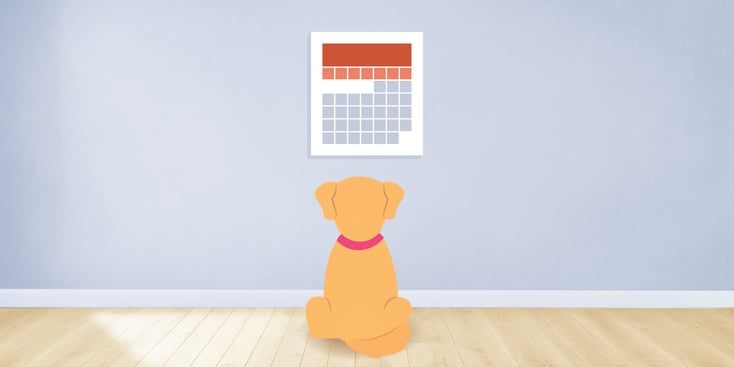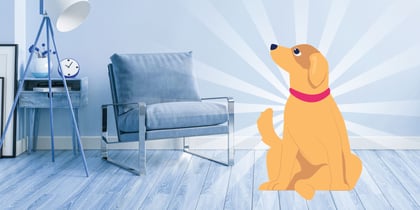How Long Are Puppies With Parvo Contagious?

Table of Contents
Parvovirus is a deadly disease that has killed thousands of puppies across the globe. It is highly infectious and can travel through neighborhoods rapidly, posing an infection risk to any dog it meets. Whilst pet vaccination has reduced the rates of Parvovirus significantly, its deadly nature makes it a disease to still be feared.
Key Takeaways:
- Parvovirus is a highly infectious and deadly disease that affects dogs, particularly younger puppies who may not have had their full vaccination course.
- A puppy infected with parvovirus will remain contagious to other dogs during its illness and for approximately two weeks after the infection.
- If you believe your dog has been exposed to parvovirus, take them to a vet for immediate testing and treatment.
Parvovirus infects dogs, particularly younger puppies who may not yet have had their full vaccination course. It most commonly affects dogs aged 6 weeks to 6 months, but any age of dog can be infected if they are not vaccinated. Parvo in dogs can affect any breed or gender.
Parvovirus Infection
Parvovirus rapidly divides in the gastrointestinal tract causing inflammation and bleeding of the gut. This progresses rapidly to dehydration and emaciation as the intestines are damaged and unable to absorb vital nutrients.
Signs of Parvo include:
- Vomiting
- Diarrhea with blood
- Hyper-salivation or drooling
- Lethargy
- Dehydration
- Rapid weight loss
- Bloated belly
- Refusal to eat or drink anything
All of these signs are fairly classic for Parvo in dogs, and if you notice these signs you need to contact a veterinarian immediately for testing and treatment.
Stress-Free Wellness Exams for Your Growing Fur Baby
With our in-home visits, your kitten or puppy can snooze away while we keep their vaccines up-to-date and ensure they're on the right paw to a healthy and happy life.
How Long is Parvo Contagious in Dogs?
Puppies are infectious both before, during, and after their illness. Shedding of the virus sometimes starts even before the clinical signs of Parvovirus occur. This can be as soon as four to five days post-exposure to the virus.
The virus will continue to be shed in the feces during an active infection and then for at least two weeks after signs have resolved. Therefore your puppy should have no contact with the outside world at all for two weeks after becoming well again. To make sure you time this correctly, keep a diary with the signs your puppy is showing each day (e.g., 1 bout of diarrhea at 3 pm Friday, May 30th). This will help you track the disease’s progress and show signs of improvement as well as the last day of signs.
Your puppy will be contagious to other dogs the entire time they are unwell and for around two weeks post-infection. It’s important to follow the guidelines below to reduce the chances of disease spreading.
Parvovirus can last long on surfaces, contributing to its highly infectious nature. Parvovirus can survive months on surfaces such as concrete, so infections can still be transmitted to new dogs after your dog is recovered. This is especially important to consider when thinking about bringing another puppy into your home, either to add to your family or even if they are visiting.
Reduce Contamination in Your Home
To reduce the overall viral load in your home, either before your puppy comes home from the vet hospital or during their treatment at home if you are choosing to treat by daily vet visits you need to keep the area scrupulously clean.
Bleach is the best chemical for killing Parvovirus, but its concentrated form can cause side effects if ingested in dogs. Side effects include oral, gastric, and intestinal ulceration, vomiting, and lethargy. When bleaching surfaces, keep your dog out of the area and rinse the surfaces thoroughly with water, and allow them to air dry after scrubbing with bleach.
Whilst bleach is an excellent surface cleaner, it’s not suitable for all furnishing types. Read this blog, for a list of products for laundry and soft furnishings.
You also need to regularly disinfect the soles of the shoes of everyone in the home, as shoes can carry the virus outside of the home and risk exposing other puppies to Parvovirus. Avoid having any guests over to the home whilst your puppy is sick.
Multidog Households
If you have more than one dog in your home, you must isolate the Parvovirus-infected puppy from the other dog(s). Even if your other dogs are fully vaccinated they are still at risk of contracting Parvovirus from the infected puppy. In the ideal world, they would be isolated on another property such as a family member or a boarding facility. They will need to remain separated from other dogs for at least two weeks while you monitor for signs of infection.
Coats, Collars, & Leashes
Any item that comes into contact with a dog with Parvo needs to be thoroughly cleaned with cleaning solutions that kill Parvovirus. It’s important not to forget smaller items like your leash or poop bag holder, as even these can carry virus particles to other places and pets.
Summary
Parvovirus can live for a long time in the environment after your puppy has recovered from Parvovirus. As a pet parent, you play a key role in stopping the spread of Parvovirus to other vulnerable dogs. Keeping your dog isolated for at least three weeks after all signs of Parvovirus have stopped in your dog will reduce the chances of virus material spreading in the environment.
Whilst it can be frustrating to keep what appears to be a healthy dog indoors away from their doggy friends, the risks of transmission are just too great to take a chance. If you want more advice on Parvo in dogs or how to treat it, talk to our expert vets today.
Frequently Asked Questions
Is Parvo airborne?
No, Parvo (parvovirus) is not considered an airborne virus. It is primarily spread through direct contact with infected dogs or their feces and vomit. The virus can survive in the environment for a long time, making it important to thoroughly clean and disinfect contaminated areas.
How long do dogs shed Parvo?
Dogs can shed the parvovirus in their feces for about fourteen days after the onset of clinical signs, but some may shed the virus for up to several weeks. It is important to thoroughly clean and disinfect the areas where infected dogs have been and to keep infected dogs isolated for at least two weeks to prevent the spread of the virus.
How long should a dog with Parvo be isolated?
Dogs with parvo should be isolated until no longer contagious, which is typically after two weeks but can take up to a month. Keep them away from other dogs, disinfect surfaces, and vaccinate to prevent parvo.
What is the survival rate for Parvovirus-infected dogs?
Dogs who are admitted to a veterinary hospital for aggressive treatment have a good survival rate, around 85%. Dogs who do not receive veterinary treatment have a lower survival rate and often die from dehydration.
How long can a dog live with Parvo?
Without prompt and proper treatment, it's possible for a dog with parvo to die within 48 to 72 hours. That's why it's essential to seek veterinary care as soon as possible if you suspect your dog has parvo. Early intervention can greatly increase the chances of a successful outcome and help prevent the spread of the virus to other dogs. Remember that vaccination is the best way to prevent parvo in dogs.
Can my cat catch Parvovirus from my dogs?
No, your cat cannot get infected with dog Parvovirus as the virus specifically targets dogs.
Is Parvovirus contagious to humans?
Humans cannot get infected with Parvovirus. Good hand washing and cleaning are still recommended when handling diarrhea and vomiting to prevent other illnesses.
How long does Parvo live on surfaces?
Parvovirus can survive on surfaces for as long as seven months. The virus is hardy and can withstand temperature changes and environmental factors. This makes it important to take extra precautions when cleaning and disinfecting areas where an infected dog has been.
How long can Parvo live on concrete?
Parvo can live on concrete for up to nine years. It's a highly contagious virus that can survive on surfaces, making it important to disinfect any areas that may have come into contact with the virus. Regular cleaning with a bleach solution is recommended to prevent the spread of Parvo in the environment.





